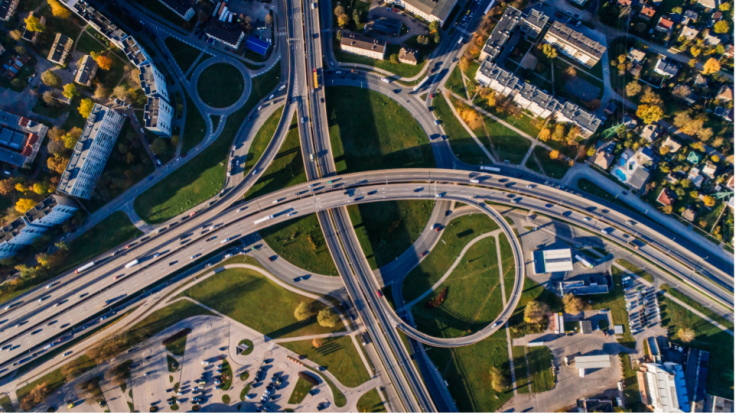
Climate change is already the defining issue of the 21st century. Whether it is trending on social media, the subject of a business webinar, or the theme of a major international political conference, it is impossible to ignore.
Currently, the UK is hosting the 26th COP in Glasgow, Scotland. Initially planned for November 2020, it was postponed due to the COVID-19 pandemic. Rescheduled for this year, COP26 will occur from 31 October - 12 November.
The Conference of Parties (COP) initiative is made of all signatories of the UN's Framework Convention on Climate Change (UNFCCC), signed in 1994, which includes 196 countries and the European Union.
Beyond the national representatives of each member of the UNFCCC, the media, non-profit organizations, and the public can participate in COP26. Including a wide range of events and presentations, COP26 will bring individuals and organizations together to work towards the goals of the Paris Agreement and the UNFCCC.
This year's COP is significant, as it is the first conference in which many of the 'by 2020' promises of the Paris Agreement of 2015, which was agreed at COP21, can be measured.
One sector that will play a crucial role in this debate is transportation.
Responsible for 24% of all global CO2 emissions, transportation plays a prominent role in the international climate change discussion. Additionally, it has a substantial effect at national levels, accounting for 29% of the US's total emissions and being the single largest emitting economic sector within the UK.
In response, the world needs to shift towards zero-emission vehicles. Beyond helping the environment, this shift will help create new jobs, bring cleaner air to cities, and cut the costs of car ownership.
However, the current growth of zero-emission vehicles is not fast enough to meet the goals of the Paris Agreement. Furthermore, the recent shift is mainly taking place with personal vehicles, excluding prominent vehicles such as vans, buses, and trucks.
COP26 needs to change this.
The transport agenda of COP26 is focused on strengthening international collaboration over green transport initiatives, designed to create a consensus on the pace of the global transition to electric vehicles (EV). A number of key 'Goals for Transport' have been outlined with this in mind:
- Countries: All new car and van sales are zero-emission by 2035 (advanced market) or 2040 (all other markets)
- Vehicle manufacturers: Sell only zero-emission vehicles by 2035 or earlier
- Fleet-owning: Fully zero-emission fleet by 2030 or earlier; join the Climate Group's EV100 initiative
- Civil society: Build support for the measures above
To support these goals, the UN created the Zero Emission Vehicle Transition Council (ZEVTC). To date, governments representing over half of the global car market have joined ZEVTC and are currently working together to implement measures that promote the use of EVs.
Additionally, to prepare countries and their delegates for COP26, a series of sessions was hosted titled "En Route to COP26." Topics and initiatives, such as the existing National Urban Mobility Policies and Investment Programmes (NUMP), were discussed with delegates proposing new transport initiatives that will jointly benefit emerging economies and the global environment.
While it is great to see that the discussion around transportation and climate change is taken seriously, with goals and committees established by the UN, I anticipate a lively debate over them at COP26.
I am not alone in my assessment that the 'Goals for Transport' are hugely ambitious and will require a great deal of political will and unprecedented degrees of international cooperation to be accomplished.
Countries including the UK, US, and most of Europe, have set themselves less than 15 years to ensure all new car and van sales, along with vehicle manufacturing, are electric. This places a lot of pressure on those in the transportation industry, world leaders, and local governments to enact suitable policies and build the infrastructure required to meet this goal.
Advanced markets will need to help develop markets if the same goals are to be achieved by 2040. With the current technology gap between advanced and developing markets, developing countries must leap ahead of their current practices, bypassing intermediary technologies.
However, the green transition is simply not the priority for most of the world's developing economies. Additionally, some do not have the infrastructure, disposable income, or workforce necessary to implement many of the goals being pursued at this week's conference.
I am not noting these difficulties and problems because I am pessimistic about our future. Instead, I am highlighting these challenges so that world leaders, members of international agencies, and engaged individuals of the public like you and I are aware of the road ahead of us. Leaving our naivety at the door, we can better prepare for our future.
Earlier this year, I started the Institute for Emerging Technologies and Social Impact (ITSI), hoping to foster discussion about what global policies and regulations in the spheres of energy, finance, and transportation can realistically create a better, freer, and more prosperous world.
For COP26 to be successful, the attendees must be aware of the challenges of 'Goals for Transport'. Optimism is most effective if combined with a healthy dose of realism.








